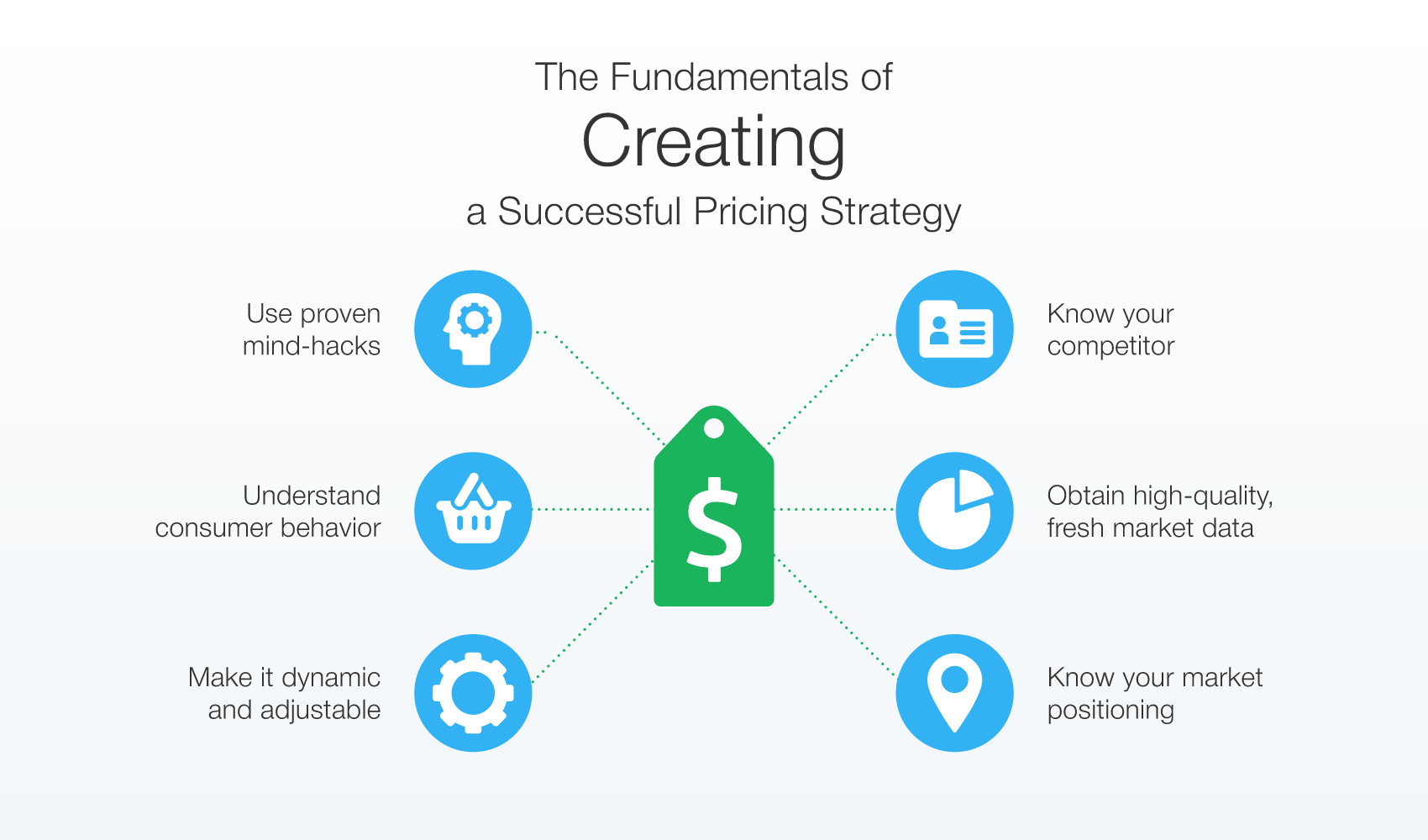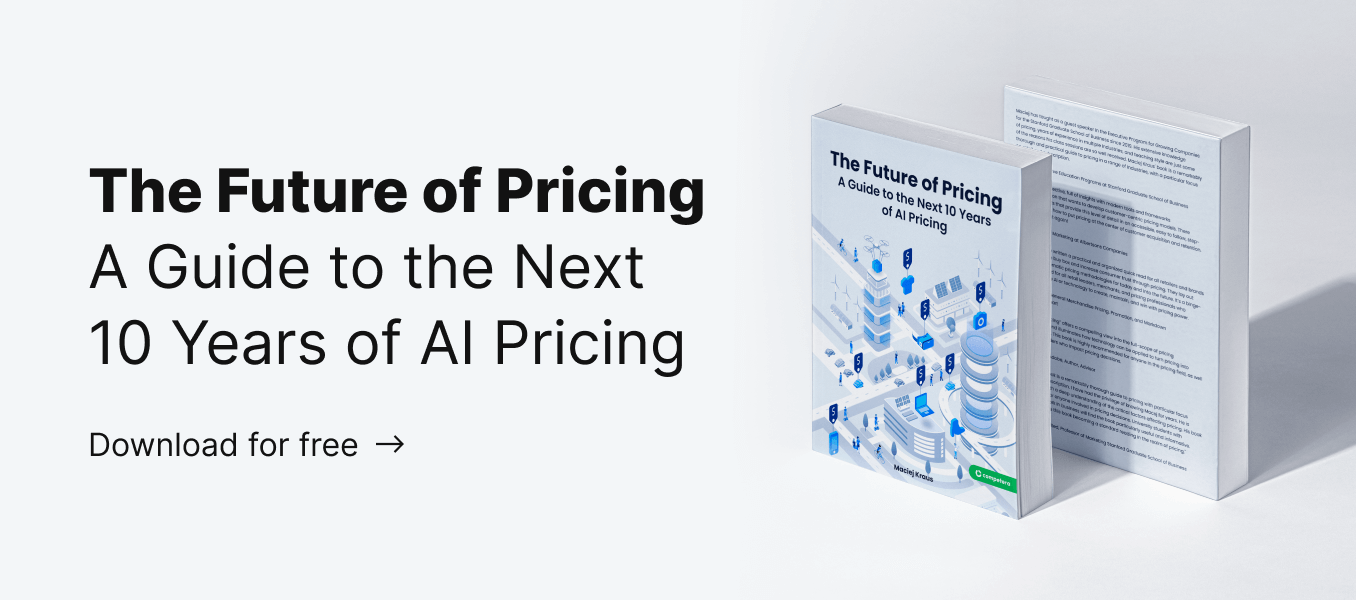Content navigation:
- What is demand-based pricing?
- Develop strategy: your first step to demand-based pricing
- When is demand-based pricing used?
- How demand-based pricing works?
- How to start using demand-oriented pricing?
What is demand-based pricing?
Demand-based pricing is one of the most sustainable approaches to drive sales and increase margin and revenue in the long-term period. The basic idea hidden behind demand-oriented pricing implies that pricing could be effective in the long-term as long as the entire portfolio is considered as integrity and priced coherently. What it means is that all products the retailer is selling are interconnected. Therefore, an ability to identify and measure cross-elasticities between the products correctly is crucial for effective demand-based pricing.
At this point, we must note that using a demand-based pricing strategy requires not only a particular level of business maturity but is also more relevant for specific industries while being less relevant in the other. The point here is that demand-based pricing is a great approach, yet it works best in the combination with other pricing approaches and strategies. For example, there are products for which market-based pricing works best while a demand-based approach is a better choice for the other SKUs. In this article, we're going to look thoroughly at SKU types for which demand-based pricing works best as well as explore what input data is required to build prices oriented on the demand. But let's start with some essential steps you need to take before shaping your individual strategy.
Develop strategy: your first step to demand-based pricing
Consistently making the right pricing decisions is one of many things that can pave the road to success. Identifying demand and elasticity in your stock — as well as any patterns between certain products — can often take your business to the next level in terms of outreach and financial objectives. But before actually implementing demand-based algorithms to craft pricing decisions, it’s important to layout your identity as a retailer to understand how it should be reflected in your pricing. Your strategy could range from having the best prices and discount offers to boasting a range of quality-driven premium products. Undoubtedly, a clear strategy is one of the signs of an effective pricing system.

Identifying a strategy is a lasting process and some things might be particularly helpful if not indispensable for it. For example, identifying your competitors and monitoring their pricing decisions and strategy can offer a lot of hints for your own strategy. It is very important to know where you stand amongst your competitors (and who they truly are). Another crucial aspect is knowing your products. Key-value items (KVIs)—which influence demand and your brand’s image—could be the perfect place to start when considering setting attractive prices. The important part is using KVIs to attract consumers to your business over your competitors. But identifying your KVIs is not enough. You should also be aware of all the roles that other products in the portfolio might have. These include cash and revenue generators, long tail, and other products.
When is demand-based pricing used?
We've mentioned some of the product roles not accidentally. Understanding how SKU roles change and what they are at a particular stage of the lifecycle is crucial to apply the right blend of pricing approaches and tools. For some SKUs, there is no better approach than a demand-based strategy. These are the following product types:
- Exclusive range items
- Traffic makers and revenue generators
- Profit makers and cash generators
- Long tail products
Now, let's look at how the demand-based engine works for SKU types listed above. Speaking of exclusive range, the typical challenge implies finding a price that would drive sales of both exclusive private label products and other non-exclusive yet premium branded products.
In this case, the retailer needs to craft optimal price positioning compared to branded, more expensive, analogs. The task is to find such a price so that both the private label and branded products would be selling well without cannibalizing each other. Here's how we resolve the challenge at Competera: our recurrent neural network (RNN) enhanced by customization strategy segments exclusive products into a separate basket which is then priced considering its' own price elasticity of demand. In contrast, the other premium branded SKUs are priced with regard to their cross-elasticities to other products. As a result, the profitability is maximized for exclusive range while the sales volume of branded products is sustained at an optimal rate.
Speaking of cash and revenue generators, the major challenge faced by retailers implies actually identifying the genuine roles each SKU plays to make sure the right approach is used towards each. We believe that the only proven way to examine these roles correctly is to use once again the advanced RNN capable of calculating the precise cross-elasticities between the products along with their own elasticities. After that, the demand-based engine can run multiple pricing scenarios to find which SKUs are actually substitutes and which are complementary products purchased in pairs with the other SKU. After cash and revenue generators are identified, the algorithm can craft an optimal price for each.
In the case of long tail products, the major challenge is the risk of diluting margin. Demand-based engine could, therefore, be used to identify the cross-elasticities and craft prices that would help a retailer to hit the stock level and get the maximum possible margin. To get more details on how SKU roles change and which pricing approach is the best at every lifecycle stage, read the material below.
How demand-based pricing works?
It's not enough to say that demand-based pricing works with the help of artificial intelligence or machine learning. The algorithms behind advanced demand-based engines are powered by top-notch technologies and sophisticated math. Of course, every software vendor uses its own approach with either merits and drawbacks. Let us show you how Competera's demand-based engine works.
Our demand-based engine is powered with next-gen deep-learning algorithms measuring product elasticity and its cross-elasticity with other products to make sure that goals on both the category and portfolio level are aligned and achieved. The relevance and accuracy of price recommendations are achieved by analyzing more than 60 pricing and external non-pricing factors that have either an implicit or explicit impact on sales. Note: the more relevant historical and other sales data is consumed by the engine, the more accurate are the results.

How to start using demand-oriented pricing?
Implementing a demand-based pricing approach requires some preparation and forethought. More importantly, having a large, reliable dataset is the first step to building your strategy. Once that’s in place, retailers need intricate pricing software to make sense of the data and offer insights. With these insights and some preparation, a relevant team can then make pricing decisions with their business goals in mind.
1. Big Data
Demand-based pricing strategies can’t be built in a day, and in order to generate reliable insights, a retailer should have a large collection of data to begin with. The most important and possibly toughest task when working with Big Data is organizing all the different types of data available. Structuring and reorganizing data collection and storage helps your advanced software find patterns that influence pricing insights.
2. Artificial Intelligence
In the modern retail sphere, making pricing decisions quickly but effectively is a priority. The traditional approach of having data analysts sift through mountains of data is simply not enough. Artificial intelligence software, like Competera, can analyze huge amounts of data and offer insights at a greater speed and precision than humans. These insights can then help answer a lot of questions regarding strategy, such as your competition or optimal pricing positioning for certain items.
3. Key Personnel
Big Data and Artificial Intelligence aren’t enough; to wrap everything up, you need people that can supervise the software and follow through with pricing decisions. Transitioning to such a role entails gaining a certain understanding of the tools and their decision-making process. At the end of the day, while AI does all the dirty work and comes up with insights, the supervisors have the final say in the decision-making process. It might take some getting used to, but integrating and building experience with artificial intelligence can elevate a retailer’s pricing strategy and brand perception.
FAQ
Cost based prices are built upon cost as a single and major pricing factor. In contrast, demand based pricing is based on complex dependencies and cross-elasticities between the products in portfolio.
Demand-based pricing is one of the most sustainable approaches to drive sales and increase margin and revenue in the long-term period for the entire portfolio.







